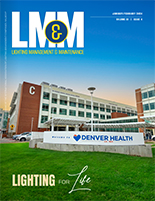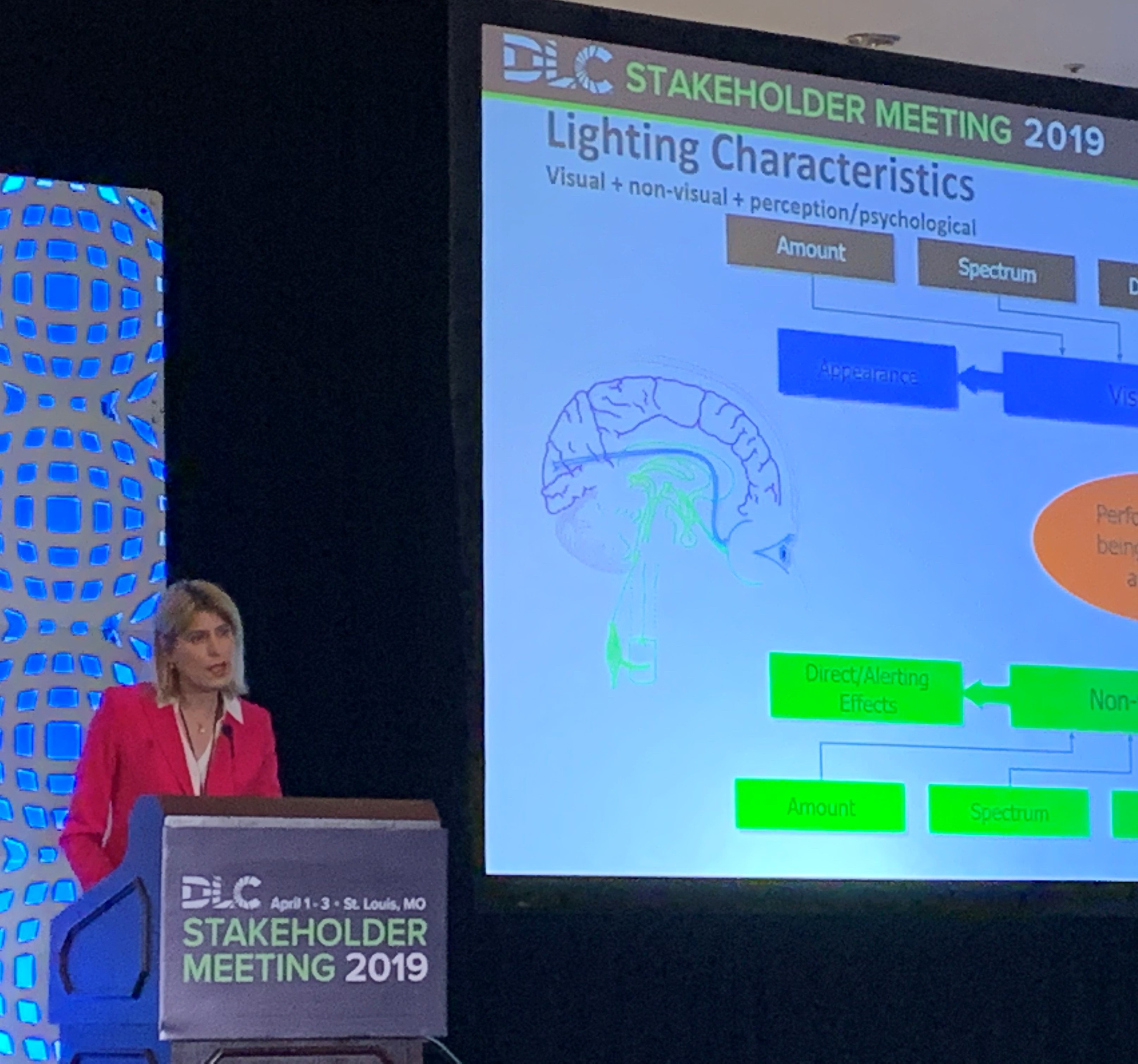The DLC can’t win. They are damned if they do and damned if they don’t.
Your humble editor, and many in the industry, has historically accused the DLC of implementing a race to the bottom with their efficacy policies, but at this week’s stakeholder meeting in St. Louis, we experienced a kinder and gentler, yet bolder, DLC and an openness that we rarely see from any lighting organization.
We have loudly complained about the DLC sacrificing quality of light to worship at the altar of energy efficiency. Ever since DLC initiated their premium program, the joke was that the fixture would meet the DLC standard, and if you want to meet the premium to get the higher rebate, simply remove the lens.
Like the rest of the industry, the DLC is going through a transformation and with QPL Draft 5.0, they have made a course correction, focusing on quality in a big way. In essence they have said, “OK we hear you, let’s shift to quality.” And the industry doesn’t know what to do. The tables have turned.
With over 1000 comments, 5.0 offers the least amount of efficacy increase at only 9.6% average compared to 25% and 35% in previous years. But it is their boldest move yet as the DLC attempts to incorporate metrics to improve:
- Color quality
- Distribution
- Glare
- Flicker
- Circadian Wellness
- Dimming and Controllability
The luminaire manufacturers complained to me, “It’s too hard. It’s too expensive and it’s time consuming.” The response from utilities was equally negative.
There are two underlying issues that prevent a consensus. The first is that the utilities can’t find a way to monetize the new benefits, so they have little motivation. The second is that the OEMs know many companies cheat on the DLC.
Like the industry and the DLC, the utilities are also going through a transformation. Some states like in NJ, VT, MA, MN, NY, and CO have increased efficiency budgets while others are decreasing. CA has significantly decreased rebates for LEDs.
Utilities want to generate energy savings so if a metric is not related to efficiency, utilities can’t include it in their cost-benefit analysis and 5.0 does very little to help their savings goals. One utility explained that what the DLC is doing is nice, but it won’t help the utilities achieve their objectives.
We have learned of a new group called North America Utility Lighting Exchange, NULX, (pronounced “new lux”) which consists of utility program managers. They have quarterly meetings and their mission is to speak with one unified voice and to “drive the bus” by providing consistent guidance and priorities to manufacturers, labs and national organizations, such as DLC. NULX had a private face-to-face meeting during the DLC Stakeholder event and they plan to have a statement regarding 5.0. EdisonReport will publish that statement if we receive it. DLC also attended the NULX meeting and they have been hosting them at the DLC stakeholder meetings for the past several years.
The luminaire manufacturers have an even greater concern.
With previous QLP versions, honest OEMs had one metric, efficiency, which put them at a disadvantage. Adding several new metrics now gives them an exponentially greater handicap. The cheaters will simply build one golden sample that meets all of the new criteria, qualify for the DLC listing, and continue to build and ship what they please. In essence their only material cost increase will be for that one golden sample. Honest manufactures will have a material cost increase on every unit shipped.
EdisonReport has learned that manufacturers for approximately 20% of selected products for DLC surveillance testing either didn’t respond or declined to participate (most was non-response). DLC delisted those products, but not those companies. A DLC spokesperson explained, “If it is a parent product, the whole family will be de-listed because a “worst-case” product used to bracket the family is no longer listed. Additionally, if this is a repeated pattern, DLC reserves the right to take further action, per the policy.” EdisonReport believes that the DLC must ramp up their surveillance efforts with much more severe penalties, including the death penalty, and/or a third party has to come in and shame the bad actors.
This was one of the most informative conferences I have attended in years. Heavy hitters like Naomi Miller, Dr. Mariana Figueiro, and James Benya were a few of the speakers and they went into great detail regarding their subject matters. These sessions helped to reiterate that clear standards are not really in place for the DLC to measure. As an industry, we can’t agree on the TM-30 color metric. UL is working on a recommended practice for Well Being, but we haven’t seen anything yet. Regarding glare, do we use the BUG rating which has had some acceptance in the US, or is UGR a better metric, which is more prevalent in Europe. As strange as it sounds, DLC might be ahead of us in trying to enforce metrics where no clear standard or RP yet exists.
In addition to 5.0, there was great education and discussion about controls as well as horticulture lighting. LEDs have a black eye in the horticulture market because of wild claims for early product. Growing marijuana consumes 70x more energy per square foot than office lighting and much of that market is still powered with legacy product. Utilities tell me there is little interest in energy savings because the value of the crops far outweigh the energy costs. Both marijuana and vegetable growers are much more interested in lights that will increase their yield as opposed to saving energy.

There was a true air of transparency that we rarely see at conferences. Clearly DLC has an agenda but there was a wide spirit of collaboration. All voices were heard. Tina Halfpenny, DLC’s Executive Director, kicked off the meeting emphasizing the last word in their name, Consortium, and the importance of finding common ground. Carol Jones of Axis Lighting introduced a term called Mutual Gains Bargaining as a suggestion for moving forward. The overall theme of the stakeholders meeting was one of compromise, concession and finding mutually beneficial solutions. At the end of individual sessions, the entire group would reconvene and DLC would recap each session to the entire group and then ask people in those previous sessions if the assessment was correct, thus giving people two opportunities to comment. For the more quiet types, post-it notes were provided and those concerns were addressed.
At the end of the conference, Tina Halfpenny explained to me that to continue seeking gains in efficiency, the DLC needs to approach its lighting specs more comprehensively and include quality metrics. She went on to say, “Otherwise, we risk installing 80 million products a year between now and 2024 that could inflict glare, poor color quality and poor light distribution. We’re trying to figure out how to do this right, and how to make it a streamlined process. We know that the devil is in the details…and we are hoping to get more input on how to craft the details as we continue to develop the new spec.”
There are no easy solutions here, but we are pleased to see that DLC understands the importance of quality and we applaud their eagerness to use their out-sized influence and add quality to their metrics. But until the utilities see a financial benefit and the OEMs see a fair playing field, 5.0 will likely remain a draft.




